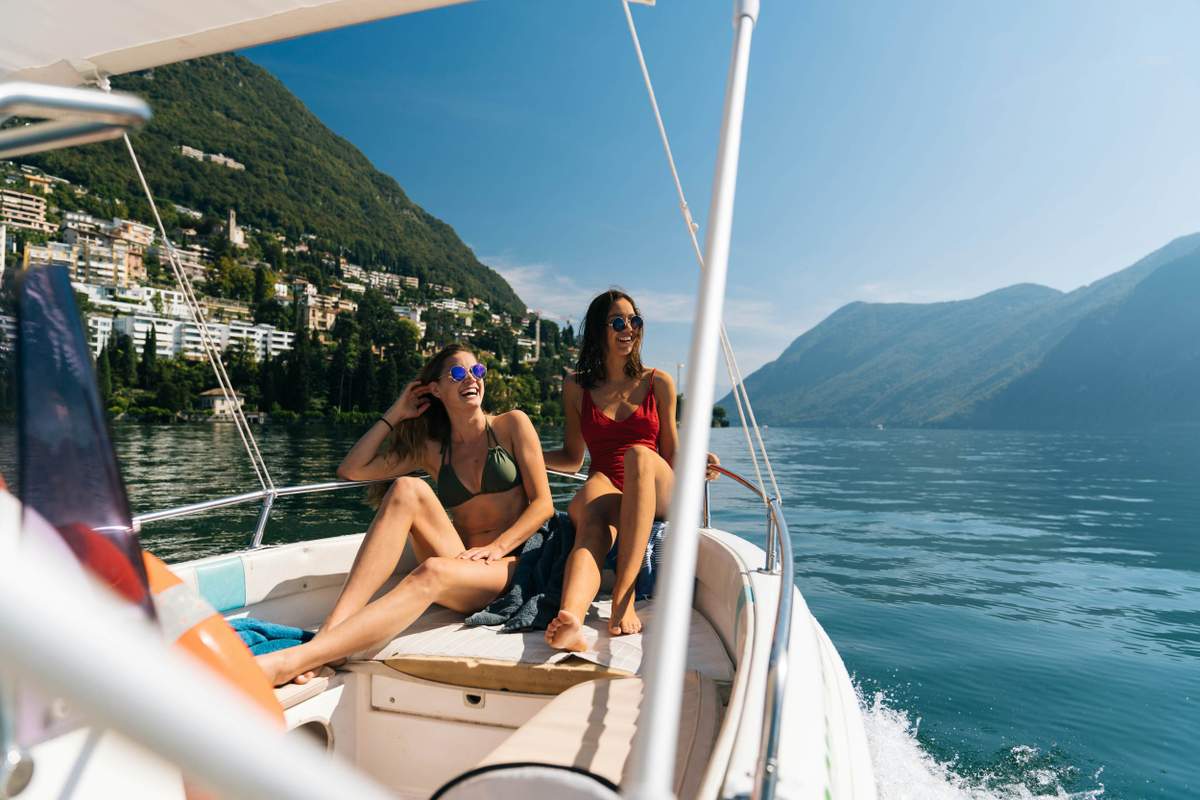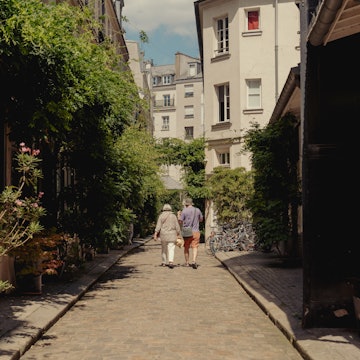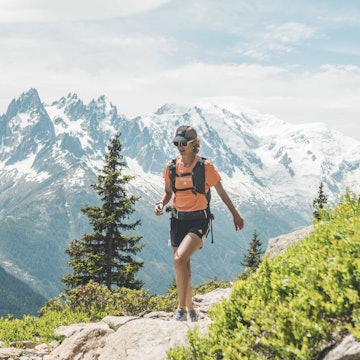

Arosa. Mario Krpan/Shutterstock
In a country with a staggering amount of vertical angles, the Swiss are practically born on skis. Even the dinkiest hamlet has a ski lift in the Alps, so the question is not so much where you can ski but how. Whether your idea of ski heaven is a remote log chalet or a party-hard resort, virgin or veteran, black run or blue, Switzerland has a slope to suit when the flakes fall.
The big-hitter resorts get all the fuss. St Moritz, Gstaad and Verbier, Davos and Klosters, and Zermatt of Matterhorn fame are the A-listers of Switzerland’s skiing scene – and justifiably so. While they offer sensational downhill skiing, snowboarding and pristine backcountry for all to explore, they really are just the tip of the iceberg for Swiss ski resorts.
Your magic moment might come elsewhere: in the Bernese Oberland, with Eiger’s fearsome north face looming over your shoulder as you hurtle down the pistes; in the snowy wilds of Graubünden; or on less-skied slopes in deepest Valais, where the glacier-capped Swiss Alps are at their highest as they peek across to Italy.
Read on for our take on the best places to ski in Switzerland.

When is the best time to go skiing in Switzerland?
The winter ski season in Switzerland typically runs from December to April, with the slopes buzzing with skiers and boarders until Easter. Prices skyrocket during school holidays, so avoid the crush and visit during the shoulder seasons (early December, January and March) for quieter pistes, slightly less expensive rooms and a greater choice of accommodation.
How should I pick a slope?
Ski runs are color coded according to difficulty.
Blue: easy, well-groomed runs that are suitable for beginners.
Red: intermediate runs that are groomed but often steeper and narrower than blue runs.
Black: for expert skiers with polished technique and skills. They are mostly steep and not always groomed, and they may have moguls and vertical drops.

How much do ski passes and lessons cost in Switzerland?
We’ll be honest: skiing in Switzerland is not a bargain choice. But with a bit of planning, there are several ways to save some money.
Ski passes will be a hefty chunk of your budget, setting you back around 75 Swiss francs (Chf) per day or Chf350 for 6 days. Factor in around Chf45–70 per day for ski gear and Chf20 for boots, which can be reserved online at Intersport. Traveling with kids? Their equipment is roughly half that price. For discounts of up to 60%, prebook ski and snowboard gear at Ski Set or Snowbrainer.
To skip to the front of the queue, consider ordering your ski pass online. Swiss Passes gives reductions of up to 25% on standard rates. Covering 40 ski areas – many of them in lesser-known resorts – the Magic Pass is a good deal for skiers. It’s valid for an entire year and is substantially less expensive if you order it online.
All of the major resorts have ski schools, with half-day group lessons typically costing Chf50–80. Schweizer Skischule has a clickable map of 169 ski schools across the country.

Top places to ski in Switzerland
1. Bask in the scene in St Moritz, Klosters and Davos
Best for big-name resorts
The scenery takes a dramatic turn for the wild in remote Graubünden in eastern Switzerland, where you’ll find some truly outstanding slopes to pound the powder. First up is the supermodel of Swiss ski resorts, St Moritz, enshrined in Swiss skiing legend, with Olympic heritage, 350km of groomed, snow-sure slopes (some topping 3000m), glacier descents and plenty of freeriding opportunities.
The twin resorts of (pretty) Klosters and (popular) Davos share 300km of runs spread across six resorts, with some good terrain parks in the wintry mix. Davos is geared mostly toward intermediates and experts, with some terrific black runs and backcountry to play on. Snowboarders also rave about the terrain parks, freeriding and après-ski scene in Laax.
Family-oriented sister resorts Arosa and Lenzerheide are scenic picks for beginners, intermediates and cross-country fans. The glorious winter walking and sledding trails have lots of appeal for families and nonskiers. Arosa has gentler, well-groomed, tree-lined slopes, slick lift systems and accessible off-piste areas, while Lenzerheide’s steeper sections, superb views and mountain dining are just a gondola ride away.
Local tip: Want to give the crowds the slip? Glide across to the serene, uncrowded slopes of Pizol, Scuol, Samnaun or glacier-rimmed Pontresina, all a snowball throw away from St Moritz.

2. Meet the Matterhorn in the south
Best for the highest peaks
Nudging up to Italy in southern Switzerland, Valais is the winter dream, with the country’s highest peaks rising like natural skyscrapers above the 4000m mark.
Nothing beats skiing in the shadow of the Matterhorn, soaring 4478m above Zermatt in a perfect pyramid. Snowboarders as well as intermediates and off-piste skiers rave about the car-free resort's 360km of scenic runs. Reaching up 3883m, Matterhorn Paradise enthralls with some of Europe’s highest slopes and year-round glacier skiing. Zermatt has upped its sustainable game, too, with a photovoltaics system powering its cable valley station, electric ski buses and snow groomers that run on eco-speed diesel.
Almost as gorgeous is Crans-Montana, a superior beginners’ choice, with gentle, sunny, south-facing slopes and the Matterhorn and Mont Blanc puncturing the skyline.
Verbier has some terrifically challenging runs for experts; the terrain is vast here, with 410km of slopes spread across four valleys. Hard-core skiers and boarders favor snow-sure, high-altitude Saas Fee for its long runs and glacier skiing.
Snuggling up to France’s mammoth Les Portes du Soleil ski arena, Champéry has access to 650km of slopes.
Queues are few and families are welcome in Bettmeralp, tucked away in a quiet corner of Valais. With the mighty Aletsch Glacier unfurling alongside it, the cute-as-a-button resort combines classic Alpine timber-chalet looks with a phenomenally wild backdrop.

3. Discover the backcountry in Central Switzerland
Best for off-piste skiing
Surprisingly little known given its snow-sure slopes and staggering mountain backdrop, Engelberg (Angel Mountain) is framed by glacier-capped Mt Titlis. The real treasures here are off-piste, including Galtiberg, a 2000m vertical descent from the glacier to the valley.
Contrasting low-key village charm with big wilderness, Andermatt is another backcountry ski-touring and boarder favorite. This is one of Europe’s great untapped freeriding resorts. While intermediates will enjoy the pistes connecting Andermatt with Sedrun (lift tickets are valid for both resorts), experts can take the gondola to the foreboding 2961m Gemsstock. With limited pistes, this mountain is a powder hunter’s dream – hire a guide to take you on the backcountry route to the nearby village of Hospental.

4. Be bowled over by the Bernese Oberland
Best for variety
Mountains of myth with Christmas card scenery make the Bernese Oberland pure winter wonderland stuff. Right at its phenomenally pretty Alpine heart, the Jungfrau Region is crisscrossed with 211km of well-maintained slopes, ranging from easy to hair-raising, that grant fleeting views of the Big Three: Eiger, Mönch and Jungfrau.
Ski here and you can tag on a once-in-a-lifetime ride up to Europe’s highest train station, 3454m Jungfraujoch, where an icy wilderness of swirling glaciers and 4000m turrets unfolds.
Grindelwald, Wengen and Mürren bombard you with some of the most gorgeous views anywhere in the Swiss Alps, with highly varied skiing and a relaxed, family-friendly vibe.
Tougher runs appealing to experts include the Inferno and World Cup Lauberhorn. For more glitz, swing west to Gstaad, which has fine downhill on 220km of slopes and pre- and postseason glacier skiing at nearby Glacier 3000.
















